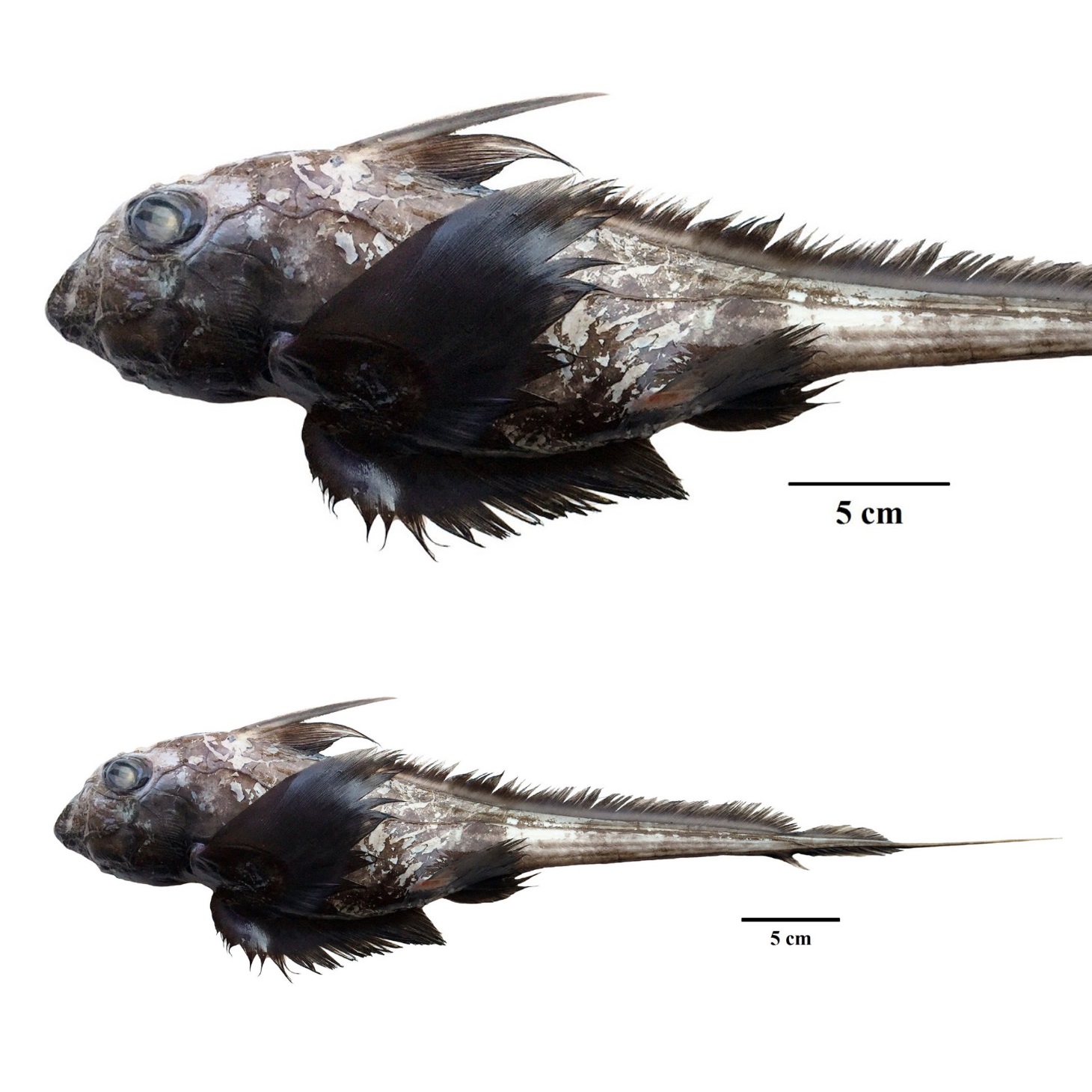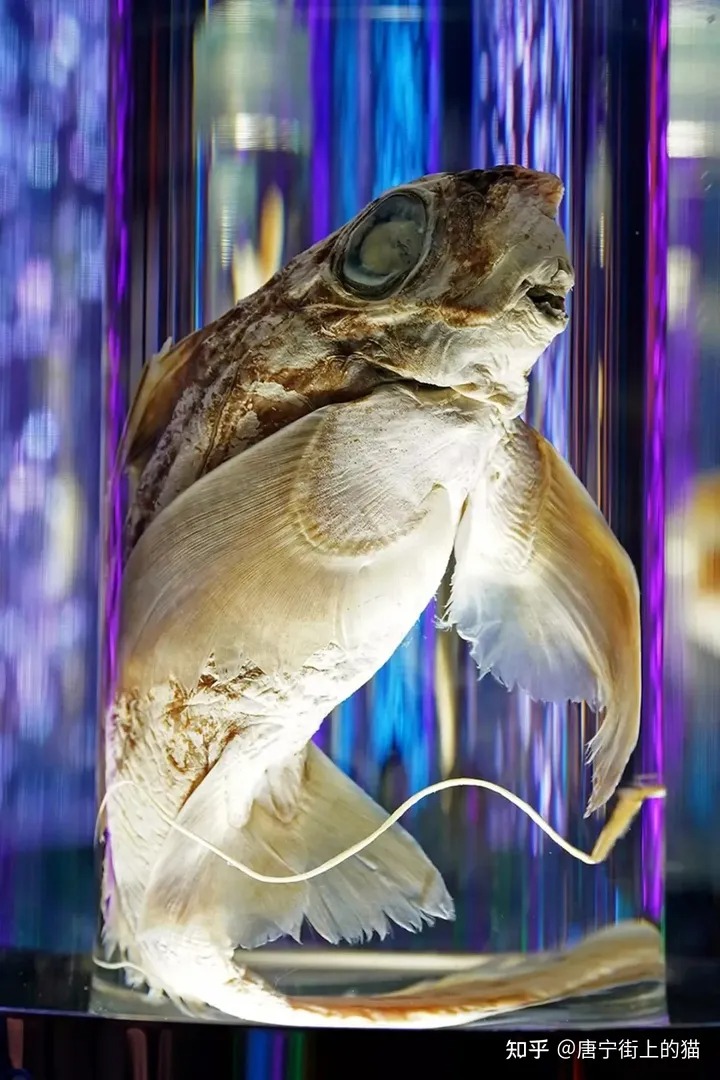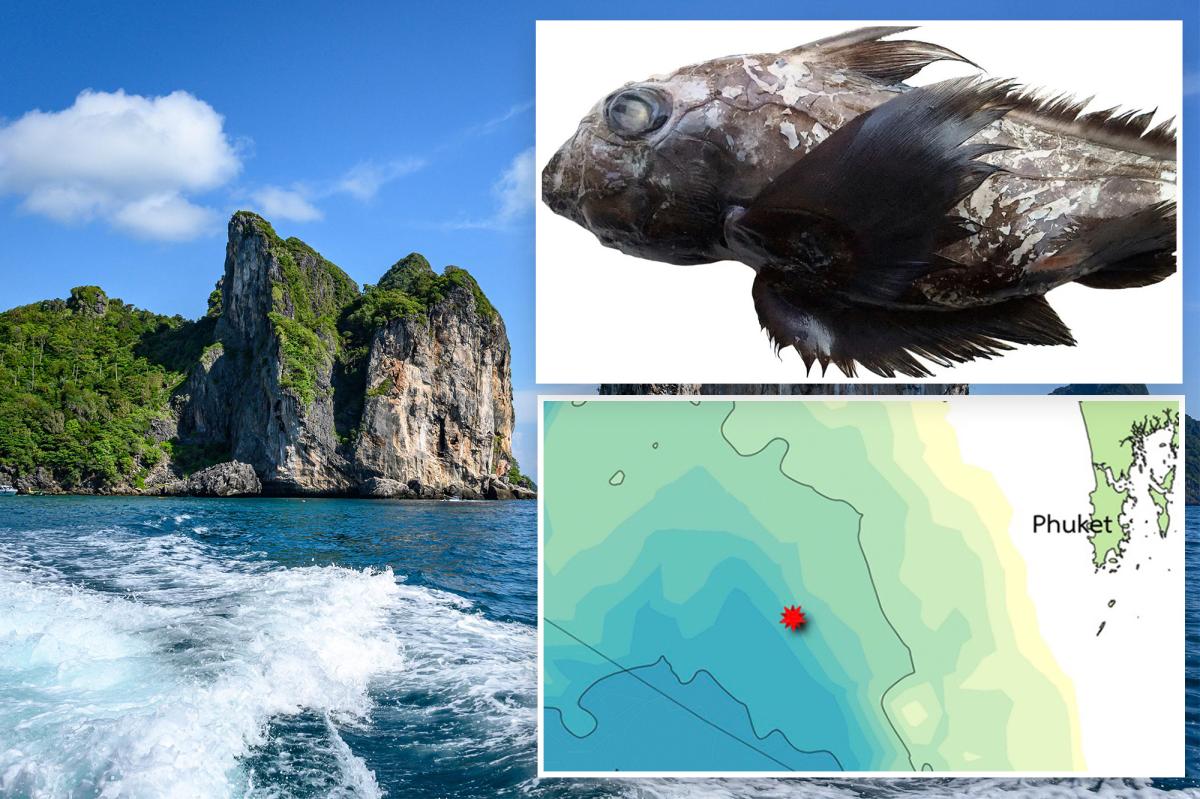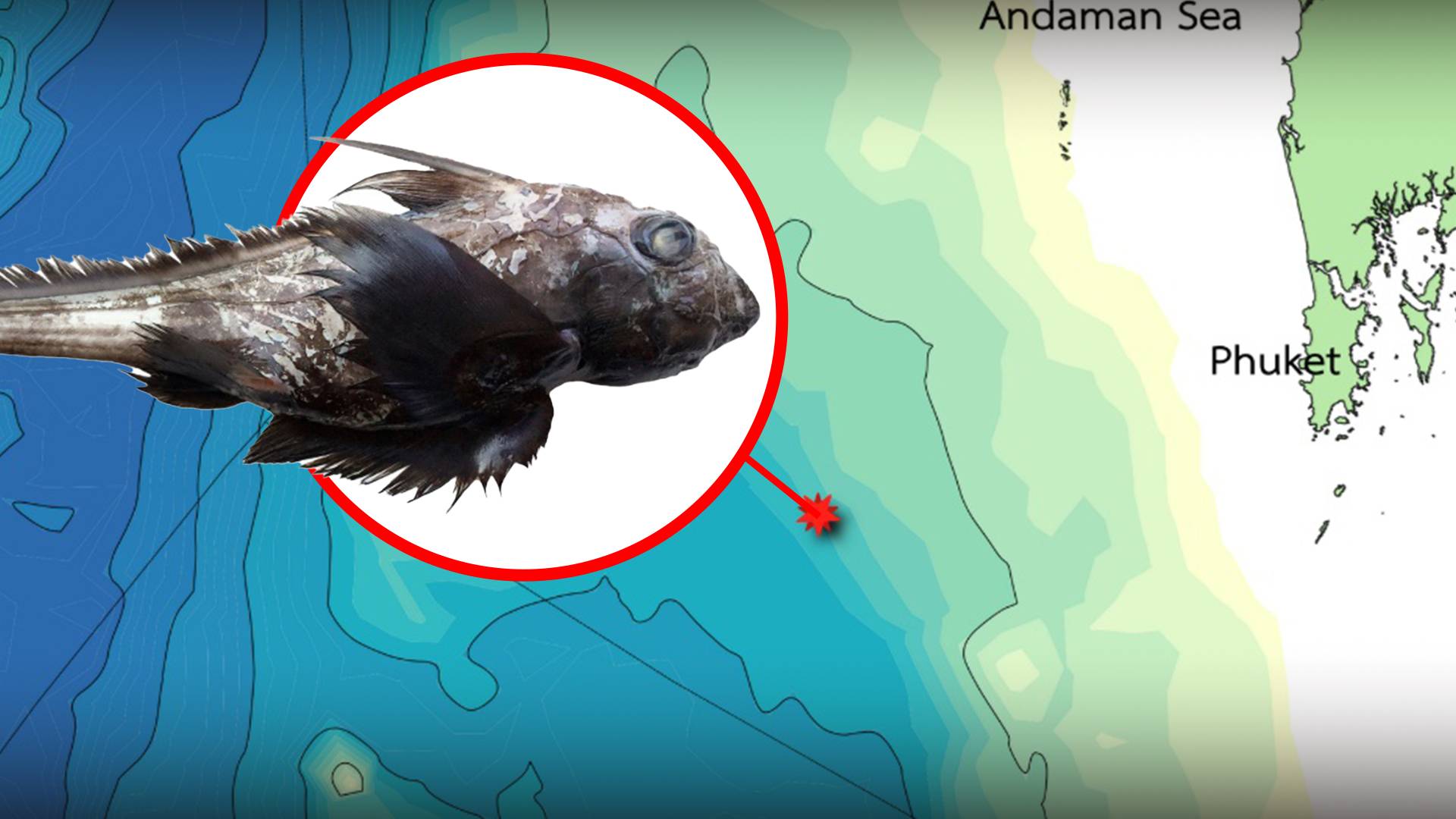A New Species Emerges on the Coast of Thailand, 300 Million Years Old, Making It One of the Oldest Living Fish Species!

A creature known as the “ghost shark” has been discovered by scientists off the coast of Thailand. Its peculiar appearance has earned it the nickname of Shortnose Chimaera. This species belongs to the family of cartilaginous fish, along with sharks and rays, making it one of the oldest living fish species. These amazing creatures were found in the depths of the Andaman Sea, off the coast of Thailand.
A Mysterious and Ancient Creature
It is believed that ghost sharks inhabit the depths of the ocean, specifically around underwater mountains and continental slopes at depths of 500 meters below the surface, where sunlight cannot reach. They can grow up to 20 inches long and feed on marine organisms found on the ocean floor.

Chimaera supapae, as this deep-sea creature is scientifically called, belongs to the ancient order of Chimaeriformes. These ancient fish are distant relatives of sharks and rays. With their feathery-like fins and elongated bodies, they truly stand out among other marine organisms. This fascinating discovery was described in an article published in the Raffles Bulletin of Zoology on March 6th.
A Rarity in the Deep Sea
Ghost sharks are incredibly rare to encounter. David Ebert, the lead author of the study, stated, “This is the 54th species of Chimaera known worldwide, out of 53 previously documented.” From an evolutionary perspective, these Chimaeras are among the oldest lineages, dating back 300 to 400 million years. This new species discovery highlights how little we still know about the marine environment and the discoveries that await us.

These deep-sea creatures are mainly found in the slopes of continents and sub-oceanic ridges, hiding in depths below 1,640 feet (500 meters). The marine nature of their habitat makes them challenging to find, especially in areas like the Andaman Sea, where depths can exceed 14,500 feet (4,400 meters).
Unique Characteristics and Naming
Chimaeras, commonly known as ghost sharks or ratfish, derive their names from their large, reflective eyes and their slender, mouse-like bodies. Some species can reach lengths of up to 6.6 feet (2 meters). Chimaera supapae, the newly described species, has a short snout and measures around 20 inches (51 centimeters) in length, with broad pectoral fins. The unique “feather-like” filaments on their bodies are speculated to be related to their ability to navigate through high-surfaced rock bottoms.

These creatures are considered living fossils, as they retain many primitive characteristics similar to ancient fish species. Their bodies are covered in rough, scale-like dermal denticles. They have whip-like tails and primarily feed on various prey, including fish, crustaceans, and mollusks. The discovery of Chimaera supapae is a remarkable and astonishing finding for scientists, enabling them to identify this new species through its distinctive morphology and oversized eyes. Chimaeras, often referred to as ghost sharks, are among the oldest lineages of fish, having inhabited the depths of the ocean for approximately 300-400 million years.

This species was named supapae after Supap Monkolprasit, a Thai scientist who has dedicated his life to the study of cartilaginous fish. The name “Chimaera” is derived from the mythological creature in Greek mythology with the head and body of a lion but additional heads resembling goats and a serpent’s tail.
In conclusion, the discovery of Chimaera supapae sheds light on the remarkable diversity and longevity of marine life. These extraordinary creatures serve as a reminder of the vast and mysterious world that awaits exploration in the depths of our oceans. To learn more about the fascinating world of finance and economics, visit Business Today.
